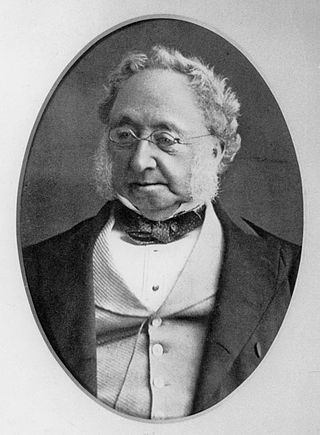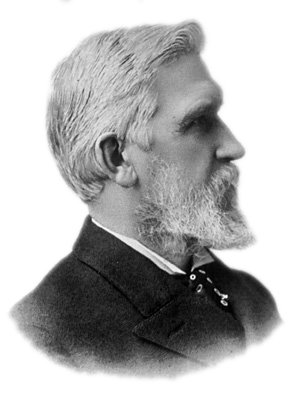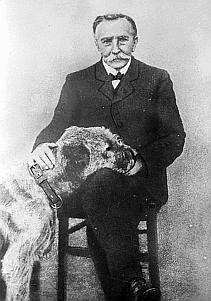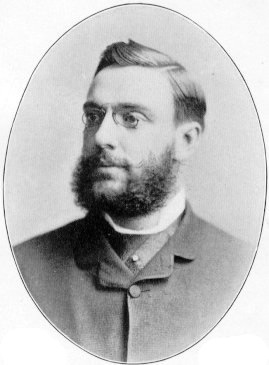Related Research Articles

Alexander Graham Bell was a Scottish-born Canadian-American inventor, scientist and engineer who is credited with patenting the first practical telephone. He also co-founded the American Telephone and Telegraph Company (AT&T) in 1885.

A telephone, colloquially referred to as a phone, is a telecommunications device that permits two or more users to conduct a conversation when they are too far apart to be easily heard directly. A telephone converts sound, typically and most efficiently the human voice, into electronic signals that are transmitted via cables and other communication channels to another telephone which reproduces the sound to the receiving user. The term is derived from Ancient Greek: τῆλε, romanized: tēle, lit. 'far' and φωνή, together meaning distant voice.

The photophone is a telecommunications device that allows transmission of speech on a beam of light. It was invented jointly by Alexander Graham Bell and his assistant Charles Sumner Tainter on February 19, 1880, at Bell's laboratory at 1325 L Street in Washington, D.C. Both were later to become full associates in the Volta Laboratory Association, created and financed by Bell.

Emile Berliner originally Emil Berliner, was a German-American inventor. He is best known for inventing the lateral-cut flat disc record used with a gramophone. He founded the United States Gramophone Company in 1894; The Gramophone Company in London, England, in 1897; Deutsche Grammophon in Hanover, Germany, in 1898; and Berliner Gram-o-phone Company of Canada in Montreal in 1899. Berliner also invented what was probably the first radial aircraft engine (1908), a helicopter (1919), and acoustical tiles (1920s).

Johann Philipp Reis was a self-taught German scientist and inventor. In 1861, he constructed the first make-and-break telephone, today called the Reis telephone. It was the first device to transmit a voice via electronic signals and for that the first modern telephone. Reis also coined the term.

Thomas Hawksley was an English civil engineer of the 19th century, particularly associated with early water supply and coal gas engineering projects. Hawksley was, with John Frederick Bateman, the leading British water engineer of the nineteenth century and was personally responsible for upwards of 150 water-supply schemes, in the British Isles and overseas.

Elisha Gray was an American electrical engineer who co-founded the Western Electric Manufacturing Company. Gray is best known for his development of a telephone prototype in 1876 in Highland Park, Illinois. Some recent authors have argued that Gray should be considered the true inventor of the telephone because Alexander Graham Bell allegedly stole the idea of the liquid transmitter from him. Although Gray had been using liquid transmitters in his telephone experiments for more than two years previously, Bell's telephone patent was upheld in numerous court decisions.
The year 1890 in science and technology involved some significant events, listed below.
The year 1877 in science and technology involved some significant events, listed below.

This timeline of the telephone covers landline, radio, and cellular telephony technologies and provides many important dates in the history of the telephone.
The Reis telephone was an invention named after Philipp Reis of a telephone-like device he constructed. Reis's first successful work is dated to October 1861. It was the first device to transmit a voice via electronic signals and for that the first modern telephone. Reis also coined the term.

The invention of the telephone was the culmination of work done by more than one individual, and led to an array of lawsuits relating to the patent claims of several individuals and numerous companies. Notable people including in this were Antonio Meucci, Philipp Reis, Elisha Gray and Alexander Graham Bell.

Chichester Alexander Bell was an Irish engineer and inventor. He was a cousin of Alexander Graham Bell and was instrumental in developing the graphophone.
The Elisha Gray and Alexander Graham Bell controversy concerns the question of whether Gray and Bell invented the telephone independently. This issue is narrower than the question of who deserves credit for inventing the telephone, for which there are several claimants.

This history of the telephone chronicles the development of the electrical telephone, and includes a brief overview of its predecessors. The first telephone patent was granted to Alexander Graham Bell in 1869.

Alexander Graham Bell honors and tributes include honors bestowed upon him and awards named for him.

Francis Blake Jr. was an American inventor.
Events from the year 1876 in the United States.
The Telephone Cases, 126 U.S. 1 (1888), were a series of U.S. court cases in the 1870s and the 1880s related to the invention of the telephone, which culminated in an 1888 decision of the U.S. Supreme Court that upheld the priority of the patents belonging to Alexander Graham Bell. Those patents were used by the American Bell Telephone Company and the Bell System, although they had also acquired critical microphone patents from Emile Berliner.

Thomas Augustus Watson was an assistant to Alexander Graham Bell, notably in the invention of the telephone in 1876.
References
- ↑ Koch, R. (1876). "Die Ätiologie der Milzbrand-Krankheit, begründet auf die Entwicklungsgeschichte des Bacillus anthracis" (PDF). Cohns Beiträge zur Biologie der Pflanzen. 2 (2): 277–310. Retrieved 2011-05-31.
- ↑ Galton, Francis (1883). Inquiries into Human Faculty and its Development. pp. 26–27.
- ↑ O'Connor, J. J.; Robertson, E.F. (1997). "Josiah Willard Gibbs". MacTutor. School of Mathematics and Statistics University of St Andrews, Scotland. Retrieved 2007-03-24.
- ↑ Rice, A. L. (1999). "The Challenger Expedition". Understanding the Oceans: Marine Science in the Wake of HMS Challenger. London: Routledge. pp. 27–48. ISBN 978-1-85728-705-9.
- ↑ Caldwell, Chris. "The Largest Known Prime by Year: A Brief History" . Retrieved 2011-12-30.
- ↑ United States patent #174,466.
- ↑ Brewer, Nathan (2012-03-01). "Engineering Hall of Fame: Pavel Nikolayevich Yablochkov". IEEE USA InSight. Retrieved 2024-07-27.
- ↑ van Dulken, Stephen (2001). Inventing the 19th Century. London: British Library. pp. 104–5. ISBN 0-7123-0881-4.
- ↑ "Birth of the Microphone: How Sound Became Signal". Wired. ISSN 1059-1028 . Retrieved 2023-09-19.
- ↑ "Early History of the Microphone". UGA Special Collections Library Online Exhibitions. Retrieved 2023-09-19.
- ↑ United States patent #182,389.
- ↑ "Hawksley, Thomas" . Oxford Dictionary of National Biography (online ed.). Oxford University Press. 2004. doi:10.1093/ref:odnb/12691 . Retrieved 2011-08-27.(Subscription or UK public library membership required.)
- ↑ Rennison, R. W. (1996). Civil Engineering Heritage: Northern England. p. 81. ISBN 9780727725189.
- ↑ Houlsby, A. Clive (1990). Construction and Design of Cement Grouting; A Guide to Grouting in Rock Foundations. Wiley. ISBN 0-471-51629-5.
- ↑ Glossop, Rudolph (1961). "The Invention and Development of Injection processes Part II: 1850-1960". Géotechnique. 11 (4). British Geotechnical Association: 255–279. doi:10.1680/geot.1961.11.4.255.
- ↑ Baxter, Albert (1891). History of the City of Grand Rapids, Michigan. Munsell.
- ↑ Dethloff, Henry C. "Texas A&M University". The Handbook of Texas Online . Texas State Historical Association . Retrieved 2011-11-18.
- ↑ "WEP Milestones". Berkeley Engineering. University of California, Berkeley. Archived from the original on 2012-01-10. Retrieved 2011-11-24.
- ↑ "Copley Medal | British scientific award". Encyclopedia Britannica. Retrieved 23 July 2020.